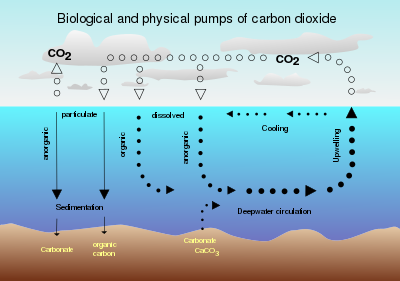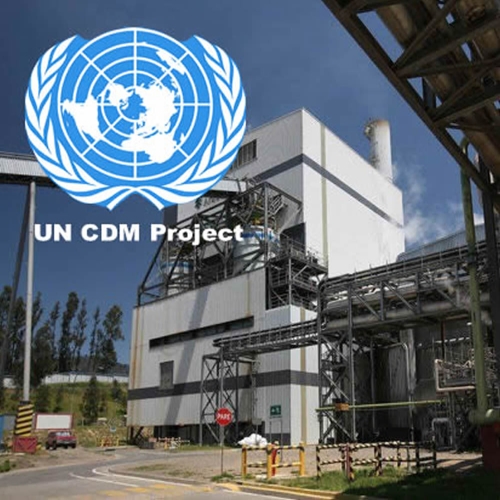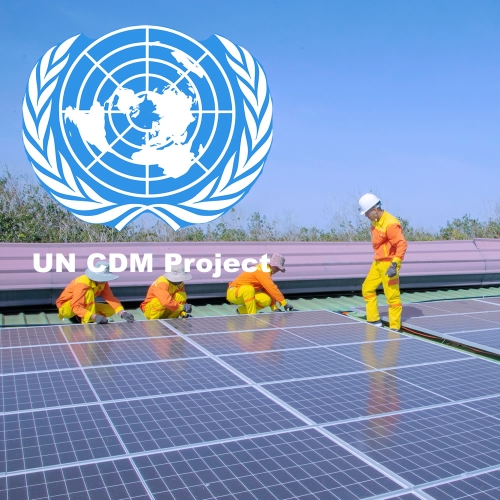Carbon Offsets finance verified projects which slows down the rate of global warming, buying time for the world to make the transition to low-emission economies.
Projects must have:

Validity
Projects must be certified to world standards.

Transparency
Information on the project is made readily available.

Efficiency
Projects should offer efficient methods to reduce carbon.
- Additionality: The project is justified and the the carbon emission reductions achieved by the project would not have occurred without the additional funding.
- Permanence: Projects should demonstrate that the emissions reductions achieved by the project will be permanent and the carbon must remain stored for a long enough period to achieve the intended climate benefit.
- Verification: Projects must be verifiable and correctly accounted for, have a low risk of non-additionality, reversal, creating negative unintended consequences, and all forms of double-counting, including double-claiming of the emission reduction benefit, are avoided.
- Co-benefits: Projects may have have additional co-benefits such as poverty reduction, biodiversity conservation, and sustainable development and this should be considered.
The Oxford Offsetting Principles are published by the University of Oxford and provide guidelines for businesses, governments, and organizations to balance out their carbon emissions in a responsible and efficient way.
Types of Projects

Renewable energy to build or maintain chiefly solar, wind or hydro sites around the world.
Reforestation and conservation projects focus on natural carbon sinks such as forests.


Community projects that help to introduce energy-efficient technology to undeveloped communities.
Waste to energy projects that capture a biomass gas like methane and convert it into electricity.


Energy efficiency projects which seek to reduce the overall demand for energy.
Potential temperature trends
[ click on images to enlarge ] The above image shows potential temperature trends. Four of the trends are global ones and one trend is based on Arctic (64°North-90°North) data:The…
Climate Change Intensified 2021 Pacific Northwest Heat Wave, Study Finds
Climate change made the disastrous 2021 heat wave in the Pacific Northwest larger and longer-lasting than it would have been otherwise, a new study finds.Read more on E360 →
‘I’ll just eat on the way’: A climate activist’s 18-hour sprint through COP28
It’s the fifth day of COP28, and Harjeet Singh is running late — again. He left his hotel at 7:20 a.m. to get to Expo City in Dubai, United Arab…
Algae’s surprising potential to help ease climate change worries
The key to bringing global net-zero goals into reach may be algae, say researchers. Studies show impressive success of certain microalgae varieties to remove CO2 from the atmosphere then break…
Bird Flu Reaches Antarctic Region
Scientists have recorded the first cases of avian flu in the Antarctic, finding the disease has spread among migrating brown skuas. Read more on E360 →
Methane eruptions threaten
The above image, adapted from Climate Reanalyzer, shows that on September 8, 2023, the North Atlantic sea surface reached a new record high temperature, of 25.4°C, even higher than the…
Wind Power
THE SITUATION

Wind Projects produce renewable energy to power homes and industry, keeping hundreds of thousands of tonnes of CO2 out of the atmosphere each year. Developing countries have experienced a rapid increase in the demand for electricity fuelled by economic growth over the past two decades. However, with demand outpacing the current supply, electricity shortages and increasingly regular power cuts are negatively affecting the economy and local livelihoods.
THE SOLUTION

Wind turbines generate clean electricity, displacing energy generated from fossil fuels and reducing global emissions. They contribute to bridging the supply-demand electricity gap in developing countries and are an important investment in renewable energy. In addition to replacing electricity generated by fossil fuels, these projects provide opportunities for the next generation of renewable energy technicians by providing work and critical experience.
THE IMPACT

These projects meet growing demands with clean energy and helping drive a low carbon future and boost local economic development. They projects create steady jobs for the operation of the wind farm and pave the way for similar wind power projects in the region. This can include the construction of upgraded power transmission lines which reduces electricity losses and improves supply.
THE OUTCOME

By reducing the amount of greenhouse gas emissions in electricity generation, wind projects make a significant contribution to climate action globally. Air pollutants such as sulphur dioxide, nitrogen oxides, and particles resulting from the electricity generation from fossil fuels are reduced. The projects can boost local small economies by creating local employment during both the construction and operational phases, stimulating climate skills technology in developing countries.
Solar Power
SITUATION

Solar power projects have the potential that to save burning of millions of tonnes of fossil fuels each year, especially coal. They produce renewable energy to power homes and industry, keeping greenhouse gasses out of the atmosphere. There is a growing demand for energy, and solar power can drive a low carbon future and boost local economic development.
SOLUTION

To replace thermal and fossil fuel-based energy, these projects install a solar power facility in areas that can harness sunshine effectively. They reduce the emissions of harmful greenhouse gases, instead exporting clean and renewable energy to the grid. Projects assist to reduce emissions in developing counties and help achieve progressive environmental and economic targets by increasing solar energy capacity.
IMPACT

Solar energy projects reduce a developing country’s reliance on carbon-intensive energy sources and boosts local economies by providing job and training opportunities. As well as these direct benefits, the project funds a number of additional initiatives for local communities: installing solar street lights, giving solar lamps to local families and upgrading facilities such as schools and health clinics to ensure 24×7 uninterrupted access to electricity.
OUTCOME

These projects makes a significant contribution to climate action globally by reducing the amount of greenhouse gas emissions in conventional electricity generation. They can boost local small economies, create steady jobs and stimulate renewable energy technology in developing countries.
Biomass Projects
SITUATION

When organic waste starts to decompose it releases methane, a potent greenhouse gas. In the past, there has been a lack of measures to control greenhouse gas emissions from being released into the atmosphere from landfills in developing countries.
SOLUTION

Waste Projects have the potential to keep millions of tonnes of CO2 out of the atmosphere each year. They aim to address the environmental impact of landfills by managing waste and remaining organic matter.
IMPACT

By preventing methane emissions from being freely released, the project is helping to combat climate change. They can also reduce the amount of waste going into landfill through a stringent recycling, which prevents soil contamination.
OUTCOME

These type of projects reduce the amount of greenhouse gases going into the atmosphere, improves the local environment and can boost local small economies by creating local employment that stimulates recycling skills in developing countries.
Hydro Power
SOLUTION

These projects produce renewable energy replacing electricity generated by fossil fuels, keeping millions of tonnes of CO2 out of the atmosphere each year in areas that have enormous hydropower potential to supply the surrounding region with clean energy.
IMPACT

By producing clean, renewable electricity, this project is reducing reliance on fossil fuel energy sources which cuts global emissions. It also contributes to local economic development by providing job opportunities and improving the local infrastructure.
OUTCOME

Meeting the growing demand for electricity with clean energy to help to drive a low carbon future and boost local economic development. Provide opportunities for the next generation of renewable energy technicians and pave the way for similar projects in the region.
GHG Abatement
SITUATION

GHG emissions such as nitrous oxide (N2O) are an undesired by-product of the industrial production process and are normally released to the atmosphere.
SOLUTION

To avoid this, plants can be fitted with a tertiary N2O abatement units which reduces the vast majority of N2O at the source, before it would be released to the atmosphere.
IMPACT
Reducing the amount of these type of greenhouse gas emissions helps the preservation of the ozone layer and stimulates climate skills technology.
OUTCOME
These type of projects make a significant contribution to climate action globally by reducing air pollutants such as nitrogen oxide and sulphur oxide and boosts green technology.
Energy Efficiency
SITUATION

The economic stability and social prosperity of developing countries depends upon the sustainable growth of the energy sector. Many are facing growing energy demands, which can lead to a strong dependency on imported coal and oil which places a substantial economic and climatic burden.
SOLUTION

Instead of being vented into the atmosphere, energy such as waste heat in industry can be recovered and utilized to drive power plant turbines that generate electricity. Energy Recovery Project methods include capturing and transferring heat from a process with a gas or liquid back that would otherwise be wasted.
IMPACT

The energy source can be used to create additional heat or to generate electrical and mechanical power. This presents an alternative to the use of fossil fuels and encourages more sustainable production methods and green technology skills.
OUTCOME

Energy recovery CDM projects help to improve energy supply in developing countries, often in situations where they have an unstable electricity grid. It reduces their use of fossil fuels, and helps to provides social and environmental benefits to communities in the surrounding areas.
Biomass Recovery
SITUATION

Biomass, especially firewood and charcoal, is widely used in many developing countries as a fuel for cooking, particularly in rural areas. It is generally carried out on thermally inefficient traditional devices that produce large amounts of CO2 and indoor pollution which can cause respiratory health hazards.
SOLUTION

The project provides fuel-efficient cookstoves which reduce the amount of greenhouse gas emissions going into the atmosphere for cooking the same amount of food. Households save money by having less fuel requirements and health is improved through the reduction of indoor air pollutants
IMPACT

The project provides fuel savings for many poor households and reduces consumption of non-renewable wood. It can lead to a significant reduction in the annual usage of biomass and a decrease in the rate of deforestation, which has a positive impact on biodiversity.
OUTCOME

Projects like these have distributed thousands of efficient cookstoves to replace open fires. They reflect traditional woodfire methods, but require approximately sixty-six percent less firewood. They considerably reduce smoke emissions and improve community health in developing countries.
Energy Recovery
SITUATION

Many developing countries rely heavily on the burning of fossil fuels to supply electricity to their population. These highly emissions-intensive activities account for a large percentage of man-made CO2 emissions globally.
SOLUTION

Biomass energy projects generate heat and/or electricity by combusting organic matter like rice husks, animal waste, sawmill waste and palm oil waste. The energy produced powers and heats homes and industries, often using waste that would have otherwise been left to decay, releasing methane into the atmosphere and added bulk to landfills.
IMPACT

Biomass to Energy projects are responsible for millions of tonnes of C02 emissions avoided per year, through the use of bio matter for fuel rather than leaving it to decay, which produces methane emissions and fine particles. They project provide a genuine alternative to fossil fuels, enabling a shift to more sustainable production methods
OUTCOME

Biomass projects enable a circular ‘waste’ economy and create supply chains and manufacturing processes for renewable biomass fuels, increasing their availability for local use. They meet growing demands for energy and and provide social and environmental benefits to communities in the surrounding areas.
Geothermal Power
SITUATION

Geothermal power plants generate electricity from a source of geothermal steam. There is huge potential for geothermal energy production to lower worldwide greenhouse gas emissions and there are a large amount of geothermal reserves located around the world. However, only a small percentage have been developed.
SOLUTION

Geothermal Energy projects involve setting up a geothermal power plant which is is costly and risky. Geothermal exploration can often takes place in areas that are difficult to access that have the capacity to effectively power turbines to produce electricity.
IMPACT

By replacing electricity generated by fossil fuels with renewable energy these projects reduce emissions that would have occurred from fossil fuel power plants, and help to drive a low carbon future, as well as boosting local economic development.
OUTCOME

Projects such as these help to meet the growing energy demands of developing counties with clean electricity. The also can improve employment opportunities during both the construction and operational phases, and pave the way for similar projects in the region.
Verification
CDM projects adhere to strict technological standards and are rigorously scrutinized through an international monitoring, reporting and verification process.

To see the UN CDM Website click here:https://cdm.unfccc.int/
The Intergovernmental Panel on Climate Change (IPCC) asserts that we must limit global warming to 1.5˚C to avert the most catastrophic effects of climate change. It has laid out four means of achieving this, and all of them rely on removing carbon dioxide from the atmosphere.
- This is because even if we cut most of our carbon emissions down to zero, emissions are virtually impossible to eliminate altogether.
- Carbon dioxide that is already in the atmosphere can affect climate for hundreds to thousands of years.
- The IPCC maintains that carbon dioxide removal (CDR) technologies will be critical to get rid of 100 to 1000 gigatonnes of CO2 this century.
- There are a variety of CDR strategies, all in different stages of development, and varying in cost, benefits and risks. CDR approaches that employ trees, plants and soil to absorb carbon have been used at large scale for decades; other strategies that rely more on technology are mostly at the demonstration or pilot stages. Each strategy has pros and cons.

Other projects
Soil carbon sequestration
The carbon that plants absorb from the atmosphere in photosynthesis becomes part of the soil when they die and decompose. It can remain there for millennia or it can be released quickly depending on climatic conditions and how the soil is managed. Minimal tillage, cover crops, crop rotation and leaving crop residues on the field help soils store more carbon.

Carbon mineralization
This strategy exploits a natural process wherein reactive materials like peridotite or basaltic lava chemically bond with CO2, forming solid carbonate minerals such as limestone that can store CO2 for millions of years.

Direct air capture
Direct air capture sucks carbon dioxide out of the air by using fans to move air over substances that bind specifically to carbon dioxide. The technology employs compounds in a liquid solution or in a coating on a solid that capture CO2 as they come into contact with it; when later exposed to heat and chemical reactions, they release the CO2, which can then be compressed and stored underground.

Enhanced weathering
Rocks and soil become weathered by reacting with CO2 in the air or in acid rain, which naturally occurs when CO2 in air dissolves in rainwater. The rocks break down, creating bicarbonate, a carbon sink, which is eventually carried into the ocean where it is stored.

Ocean fertilization
Ocean fertilization would add nutrients, often iron, to the ocean to prompt algal blooms, which would absorb more CO2 through photosynthesis.
Coastal blue carbon

Salt marshes, mangroves, sea grasses and other plants in tidal wetlands are responsible for more than half of the carbon sequestered in the ocean and coastal ecosystems. This blue carbon can be stored for millennia in the plants and sediments.
Each CDR technology is feasible at some level, but has uncertainties about cost, technology, the speed of possible implementation, or environmental impacts. It’s clear that no single one provides the ultimate solution to climate change.
We offer a range of certificates through our associates at Southpole, a leading company that develops and implements comprehensive emission reduction projects and strategies.
















































